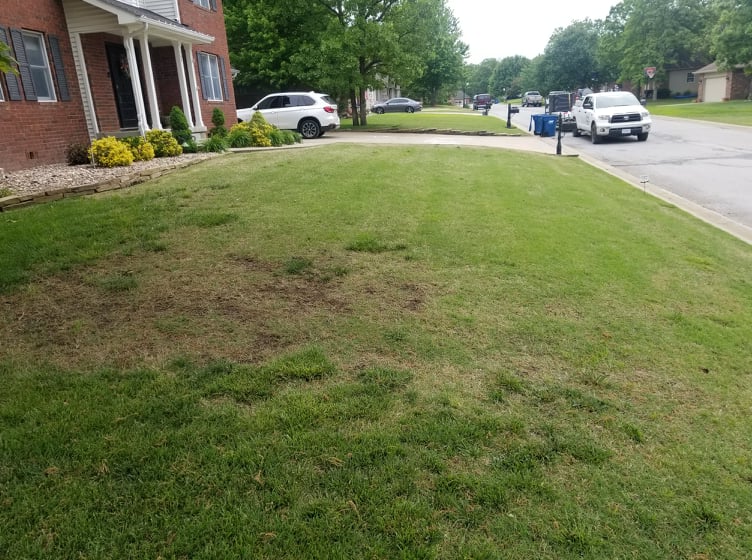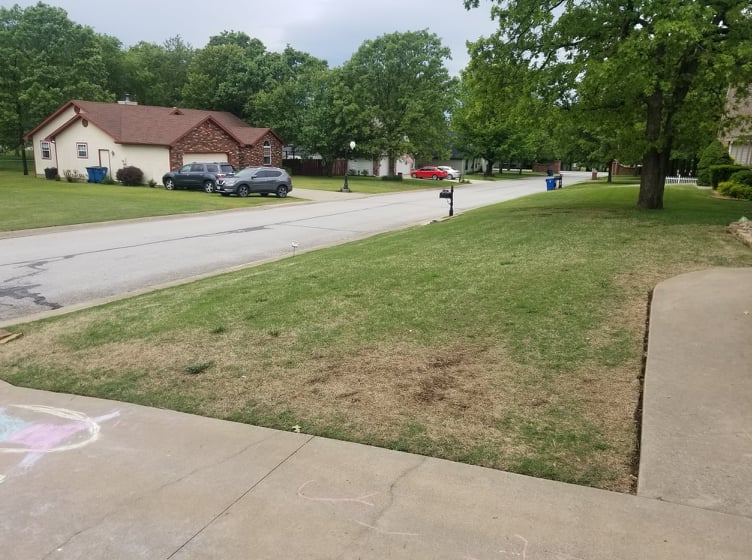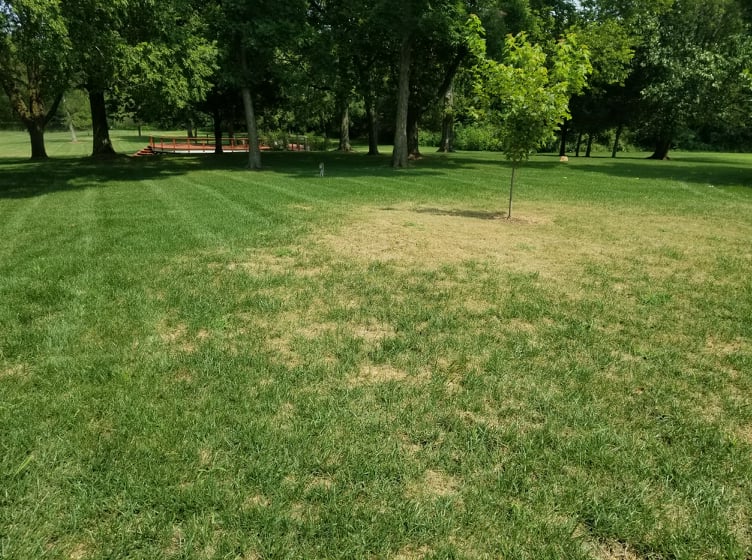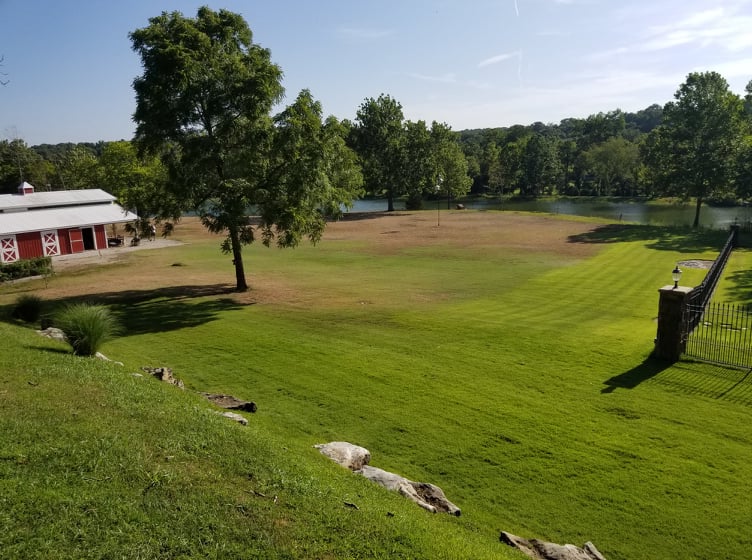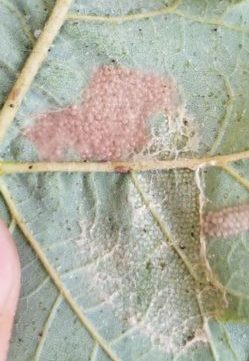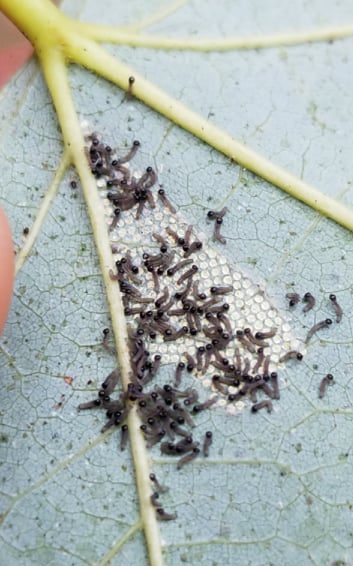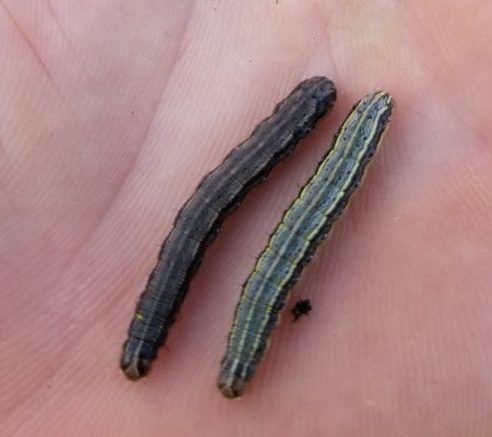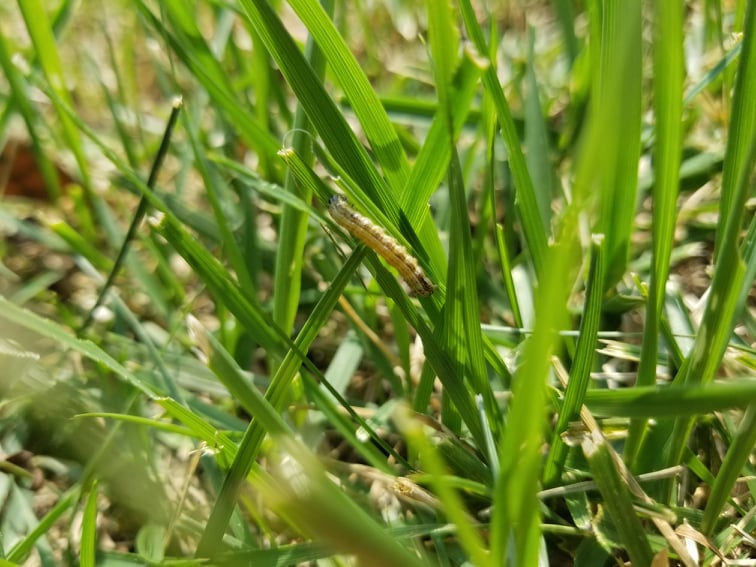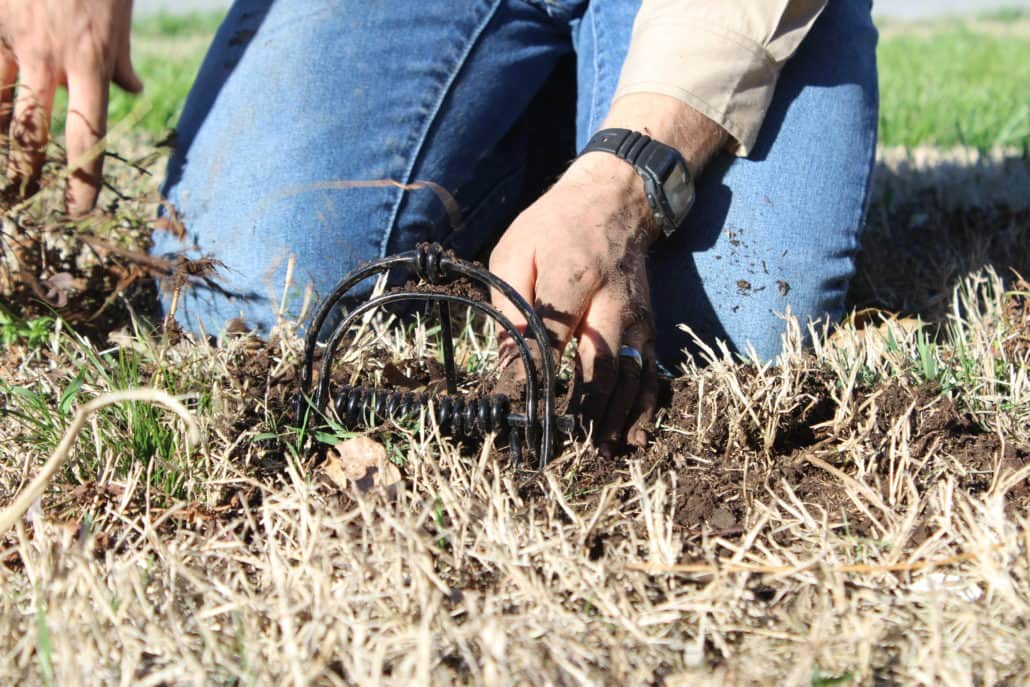Grub and Insect Control
Grubs
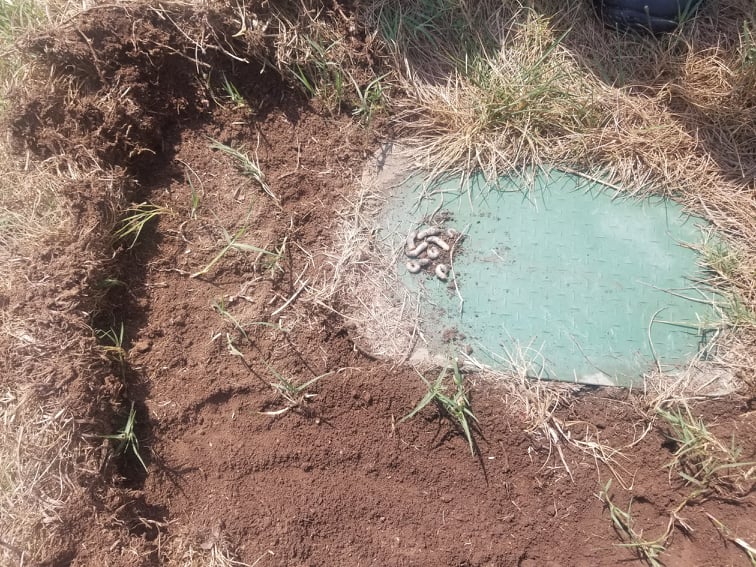
About Grubs
Grubs feed off of your grass roots and can be catastrophic to your lawn if there are too many in the soil. Grubs are beetle larvae that molt into Japanese beetles, June bugs, and more.
What to do
Grubs can be prevented with our Lawn Insect Protection Treatment. If your lawn already has damaging levels of grubs we can correct this issue with a Grub Curative Application. For lawns with previous damage, a preventative application should be done in the Late summer to Fall for the following year.
Chinch Bug
About Chinch Bugs
Chinch bugs are very small sap sucking insects that cause visual damage to the lawn, similar to what disease damage looks like. Sometimes you can look closely into the lawn and find the chinch bugs but many times the damage is done and the bugs are gone. Chinch bugs prefer warmer areas. Damage is typically seen along concrete boundaries where heat is held and transferred into the soil.
What to do
Chinch bugs infestations can be prevented with our Lawn Insect Protection Application. If your lawn is experiencing damaging levels of chinch bugs, we can apply a Surface Insecticide Application to stop the current infestation as well as apply a Lawn Insect Protection Application to prevent further chinch bug damage.
About armyworms
Armyworms are not common in our region. Occasionally and unexpectedly the wind patterns can bring them further North from the Southern regions. Without a proper amount of predators to control these pests, the armyworms can invade and destroy lawns. They get their name from the way that they feed. They march across a lawn in a matter of days eating the healthy grass. Before you know it, you have a partially to fully dead lawn.
What to do
Armyworm infestations can be prevented with our Lawn Insect Protection Treatment. If your lawn is already experiencing this damage, we can apply a Surface Insecticide Application to stop the current infestation as well as apply a Lawn Insect Protection Application to prevent further armyworm damage.
About Bagworms
Bagworms emerge early spring to scout out trees and shrubs to feed on. After a few months of heavy feeding they will stop and seal their bags shut to pupate. By Mid-Sept the males will begin to emerge as moths from their bags, find a female on your delicious plants to mate with, and then die. The females never leave their bags as their job is to procreate. For this reason, they die within their bag after laying between 500-1000 eggs. Through the winter she acts as a food source to her eggs. The ultimate sacrifice of her life!
What to do
Bagworm infestations on your trees and shrubs can be controlled with our Tree and Shrub Insect Protection Treatment. Early applications are ideal as the ease of kill becomes harder and harder as they grow.
Referral service
Mole Trapping
What to do
If moles are becoming a problem in your lawn and you are seeing an excessive amount of tunnels, we no longer offer mole trapping as a service but we can recommend a Joplin local who sets traps where the tunnels are most active. Give us a call to discuss these needs.
Plans and Services
We offer an array of services for your property. Most of our customers start with the Lawn Care Package and then add on Landscape, Pest Control, and other Add-Ons according to their needs.
WE OFFER FREE ESTIMATES
We are happy to provide a free estimate to you. You can simply fill out our ‘Online Estimate Request’ form below or give us a call.
All pricing is based on square foot. Depending on your circumstances and needs, we can meet in person, go by and see the lawn without meeting with you, or measure the lawn area online through our mapping software.

